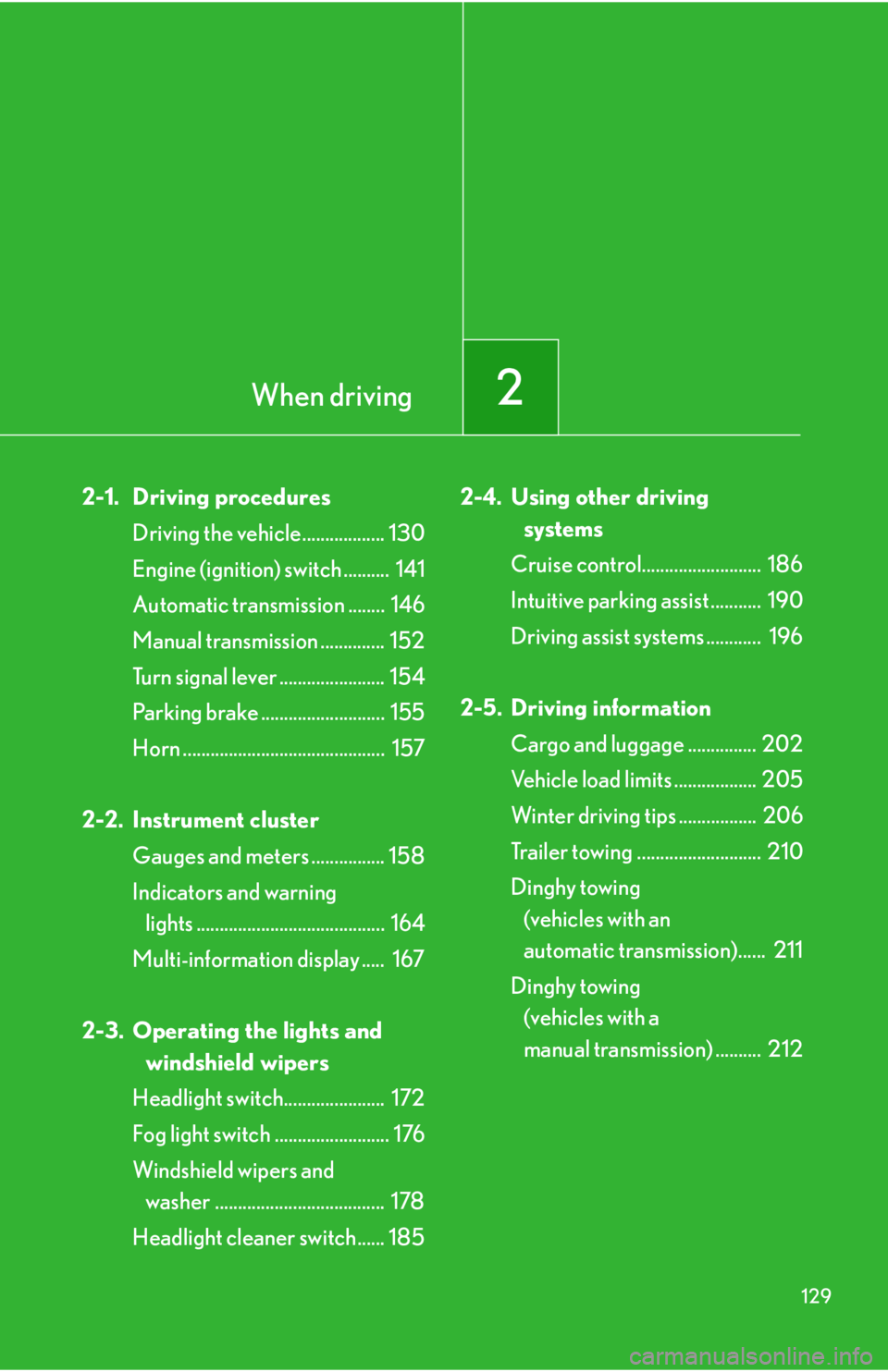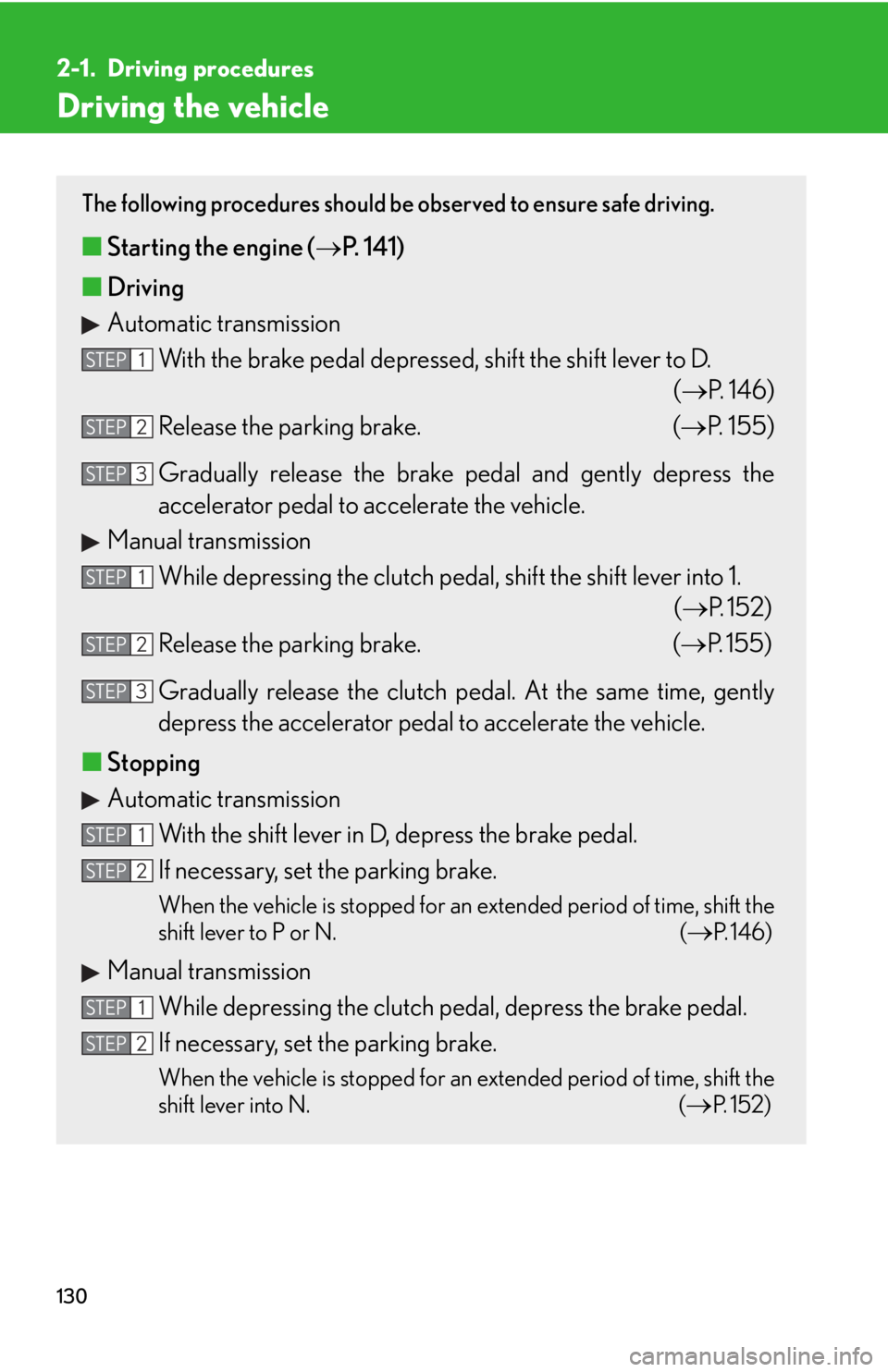Lexus IS250 2012 Using the Bluetooth audio system / LEXUS 2012 IS250,IS350 OWNERS MANUAL (OM53A87U)
Manufacturer: LEXUS, Model Year: 2012, Model line: IS250, Model: Lexus IS250 2012Pages: 592, PDF Size: 6.2 MB
Page 121 of 592

121
1-7. Safety information
1
Before driving
Installing child restraints using a seat belt (child restraint lock function belt)
■Rear facing Infant seat/convertible seat
Place the child seat on the rear
seat facing the rear of the vehicle.
Run the seat belt through the child
seat and insert the plate into the
buckle. Make sure that the belt is
not twisted.
Fully extend the shoulder belt and
then allow it to retract slightly in
order to activate the ALR lock
mode.
Lock mode allows the seat belt to
retract only.
STEP1
STEP2
STEP3
Page 122 of 592

122
1-7. Safety information
While pushing the child seat down
into the rear seat, allow the shoul-
der belt to retract until the child
seat is securely in place.
After the shoulder belt has
retracted to a point where there is
no slack in the belt, pull the belt to
check that it cannot be extended.
■Forward facing Convertible seat
Place the child seat on the seat
facing the front of the vehicle.
Run the seat belt through the child
seat and insert the plate into the
buckle. Make sure that the belt is
not twisted.
Fully extend the shoulder belt and
allow it to retract to put it in lock
mode.
Lock mode allows the seat belt to
retract only.
STEP4
STEP1
STEP2
STEP3
Page 123 of 592

123
1-7. Safety information
1
Before driving
While pushing the child seat into
the rear seat, allow the shoulder
belt to retract until the child seat is
securely in place.
After the shoulder belt has
retracted to a point where there is
no slack in the belt, pull the belt to
check that it cannot be extended.
If the child restraint has a top tether strap, the top tether strap
should be latched onto the top tether strap anchors.
■ Booster seat
Place the booster seat on the seat
facing the front of the vehicle.
Sit the child in the booster seat. Fit
the seat belt to the booster seat
according to the manufacturer's
instructions and insert the plate
into the buckle. Make sure that the
belt is not twisted.
Check that the shoulder belt is cor-
rectly positioned over the child's
shoulder, and that the lap belt is as
low as possible. (
P. 6 5)
STEP4
STEP5
STEP1
STEP2
Page 124 of 592

124
1-7. Safety information
Removing a child restraint installed with a seat beltPush the buckle release button
and fully retract the seat belt.
Child restraint systems with a top tether strapSecure the child restraint using a
seat belt or the lower anchors, and
lock the head restraint in place at
the original position.
Open the anchor bracket cover,
latch the hook onto the anchor
bracket and tighten the top tether
strap.
Make sure the top tether strap is
securely latched.
STEP1
STEP2
Page 125 of 592

125
1-7. Safety information
1
Before driving
■Laws and regulations pertaining to anchorages
The LATCH system conforms to FMVSS225 or CMVSS210.2.
Child restraint systems conforming to FMVSS213 or CMVSS213 specifications
can be used.
This vehicle is designed to conform to the SAE J1819.
CAUTION
■When installing a booster seat
Do not fully extend the shoulder belt to prevent the belt from going to ALR lock
mode: ( P. 6 7 )
ALR mode causes the belt to tighten only which could cause injury or discomfort to
the child.
Page 126 of 592

126
1-7. Safety information
CAUTION
■When installing a child restraint system
Follow the directions given in the child restraint system installation manual and fix
the child restraint system securely in place.
If the child restraint system is not correctly fixed in place, the child or other passen-
gers may be injured or even killed in the event of sudden braking, sudden swerving
or an accident.
●When a booster seat is installed, always ensure that the shoulder belt is posi-
tioned across the center of the child's shoulder. The belt should be kept away
from the child's neck, but not so that it could fall off the child's shoulder. Failing to
do so may result in death or serious inju ry in the event of sudden braking, sudden
swerving or an accident.
●Make sure the outside rear seat head re straints are not in the folded position.
●Ensure that the belt and tab are securely locked and the seat belt is not twisted.
●Push and pull the child seat from side to side and forward to be sure it is secure.
●After securing a child restraint system, never adjust the seat.
●Follow all installation instructions provided by the child restraint system manufac-
turer.
●If the driver’s seat interferes with the child
restraint system and prevents it from being
attached correctly, attach the child restraint
system to the right-hand rear seat.
●Only put a forward facing or booster child
seat on the front seat when unavoidable.
When installing a forward facing or
booster child seat on the front passenger
seat, move the seat as far back as possible
even if the “AIR BAG OFF” indicator light is
illuminated. Failing to do so may result in
death or serious injury if the airbags deploy
(inflate).
Page 127 of 592

127
1-7. Safety information
1
Before driving
CAUTION
■Do not use a seat belt extender
If a seat belt extender is used when installing a child restraint system, the seat belt
will not securely hold the child restraint system, which could cause death or serious
injury to the child or other passengers in the event of sudden braking, sudden
swerving or an accident.
■To correctly attach a child restraint system to the anchors
When using the LATCH anchors, be sure that there are no foreign objects around
the anchors and that the seat belt is no t caught behind the child restraint system.
Make sure the child restraint system is se curely attached, or it may cause death or
serious injury to the child or other passen gers in the event of a sudden stop, sudden
swerve or accident.
Page 128 of 592

128
1-7. Safety information
Page 129 of 592

When driving2
129
2-1. Driving proceduresDriving the vehicle.................. 130
Engine (ignition) switch .......... 141
Automatic transmission ........ 146
Manual transmission .............. 152
Turn signal lever ....................... 154
Parking brake ........................... 155
Horn ............................................ 157
2-2. Instrument cluster Gauges and meters ................ 158
Indicators and warning lights ......................................... 164
Multi-information display ..... 167
2-3. Operating the lights and windshield wipers
Headlight switch...................... 172
Fog light switch ......................... 176
Windshield wipers and washer ..................................... 178
Headlight cleaner switch...... 185 2-4. Using other driving
systems
Cruise control.......................... 186
Intuitive parking assist ........... 190
Driving assist systems ............ 196
2-5. Driving information Cargo and luggage ............... 202
Vehicle load limits .................. 205
Winter driving tips ................. 206
Trailer towing ........................... 210
Dinghy towing (vehicles with an
automatic transmission)...... 211
Dinghy towing (vehicles with a
manual transmission) .......... 212
Page 130 of 592

130
2-1. Driving procedures
Driving the vehicle
The following procedures should be observed to ensure safe driving.
■Starting the engine ( P. 141)
■ Driving
Automatic transmission
With the brake pedal depressed, shift the shift lever to D. (P. 146)
Release the parking brake. ( P. 155)
Gradually release the brake pedal and gently depress the
accelerator pedal to accelerate the vehicle.
Manual transmission
While depressing the clutch pedal, shift the shift lever into 1. (P. 1 5 2 )
Release the parking brake. ( P. 155)
Gradually release the clutch pedal. At the same time, gently
depress the accelerator pedal to accelerate the vehicle.
■ Stopping
Automatic transmission
With the shift lever in D, depress the brake pedal.
If necessary, set the parking brake.
When the vehicle is stopped for an extended period of time, shift the
shift lever to P or N. (
P. 1 4 6 )
Manual transmissionWhile depressing the clutch pedal, depress the brake pedal.
If necessary, set the parking brake.
When the vehicle is stopped for an extended period of time, shift the
shift lever into N. (
P. 1 5 2 )
STEP1
STEP2
STEP3
STEP1
STEP2
STEP3
STEP1
STEP2
STEP1
STEP2